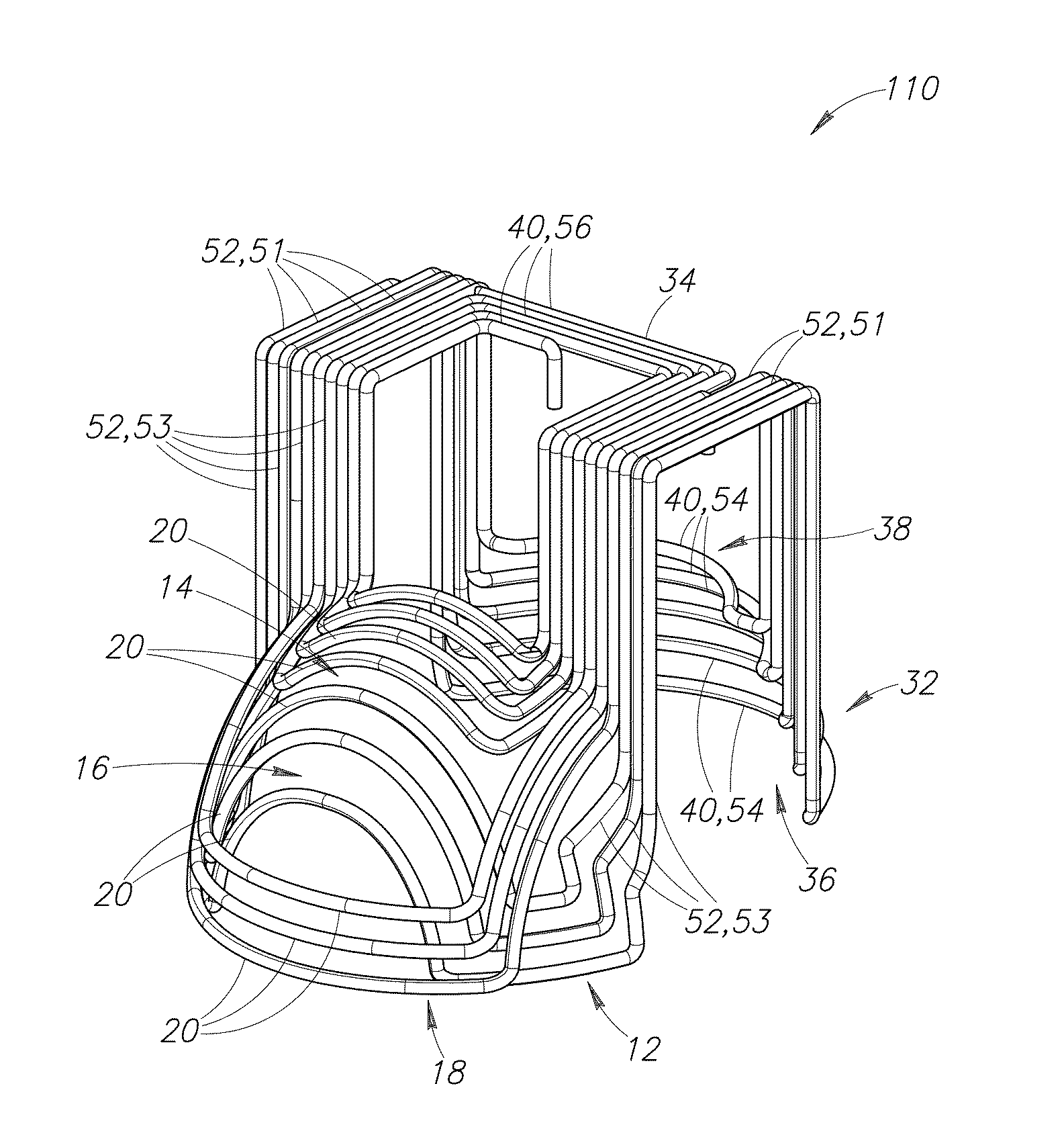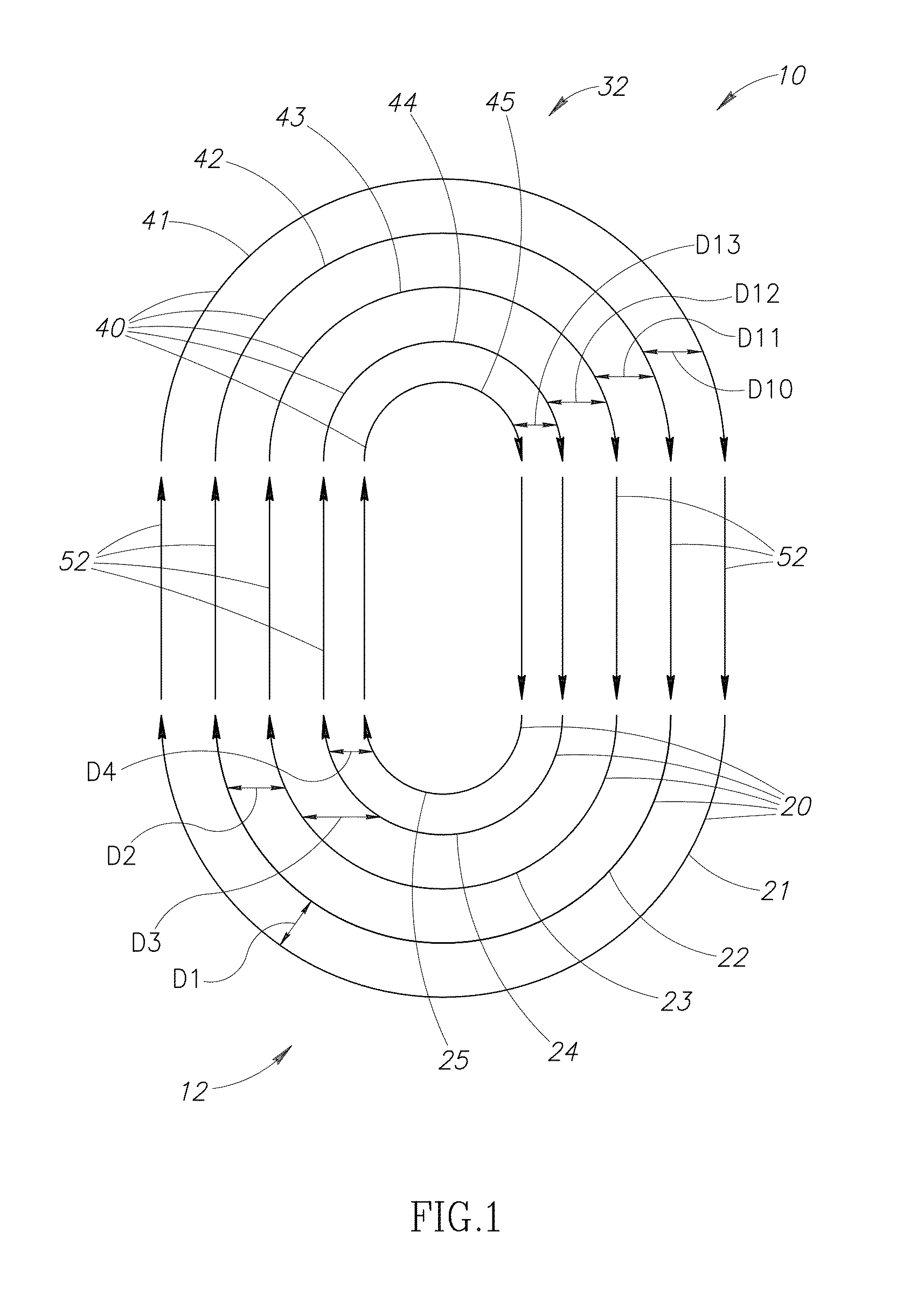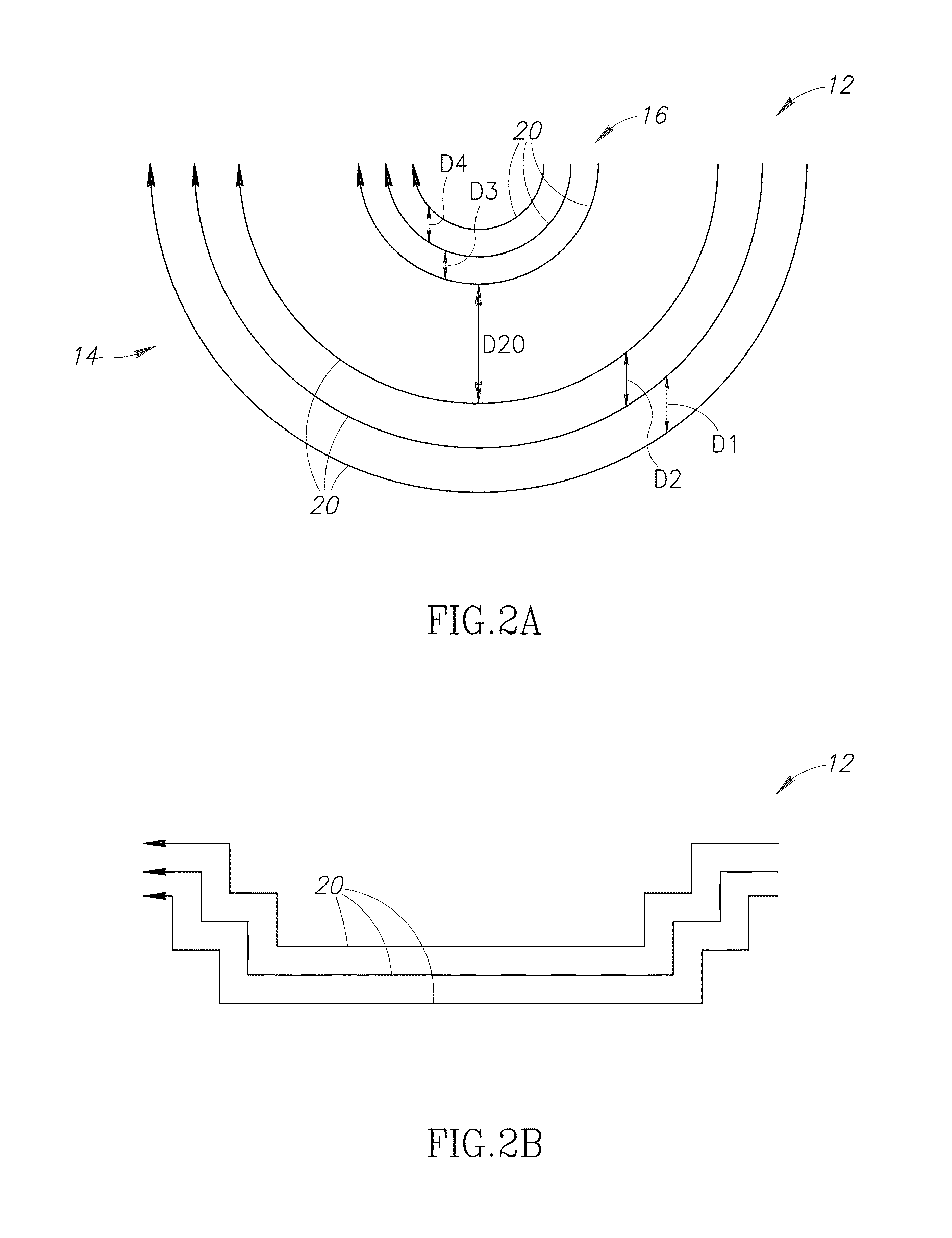Circular coils for deep transcranial magnetic stimulation
a transcranial magnetic stimulation and coil technology, applied in magnetotherapy, magnetotherapy using coils/electromagnets, magnetotherapy, etc., can solve the problems of low effect of affecting deeper neuronal structures, increase the risk of seizures, physiological damage to tissue, etc., and achieve higher absolute electric field intensity, better depth penetration profile, and higher relative electric field intensity
- Summary
- Abstract
- Description
- Claims
- Application Information
AI Technical Summary
Benefits of technology
Problems solved by technology
Method used
Image
Examples
examples
[0056]The field distribution produced by coil 110 of FIG. 6 was measured in a human head phantom model. A probe was moved in three directions inside the phantom model using a displacement system with 1 mm resolution, and the field distribution of coil 110 was measured in the whole head model volume with 1 cm resolution. Axial and coronal field maps were produced. The field maps were superimposed on anatomical T1-weighted MRI coronal slices, to show the induced field in each anatomical brain region.
[0057]Reference is now made to FIG. 9, which is an illustration of electric field distribution maps of coil 110 as measured in the human head phantom model. The field maps are shown for stimulator output set at 120% of threshold. The dark pixels indicate field magnitude above the threshold for neuronal activation. The threshold was set to 100 V / m, which is within the accepted range of thresholds required for hand motor activation. The intensity of stimulator power output used for drawing t...
PUM
 Login to View More
Login to View More Abstract
Description
Claims
Application Information
 Login to View More
Login to View More - R&D
- Intellectual Property
- Life Sciences
- Materials
- Tech Scout
- Unparalleled Data Quality
- Higher Quality Content
- 60% Fewer Hallucinations
Browse by: Latest US Patents, China's latest patents, Technical Efficacy Thesaurus, Application Domain, Technology Topic, Popular Technical Reports.
© 2025 PatSnap. All rights reserved.Legal|Privacy policy|Modern Slavery Act Transparency Statement|Sitemap|About US| Contact US: help@patsnap.com



